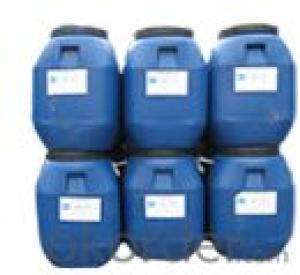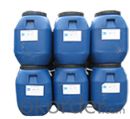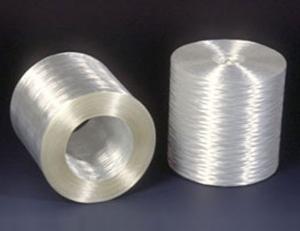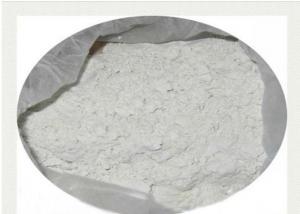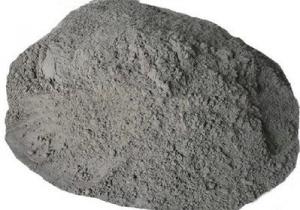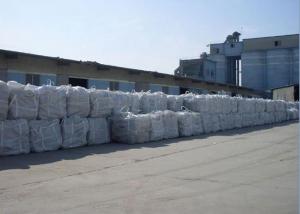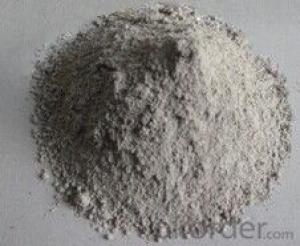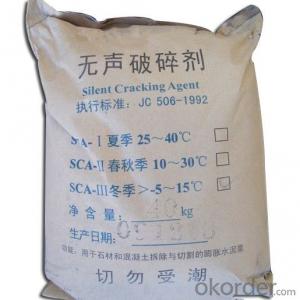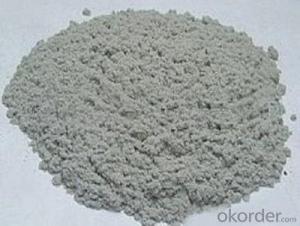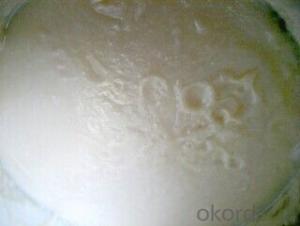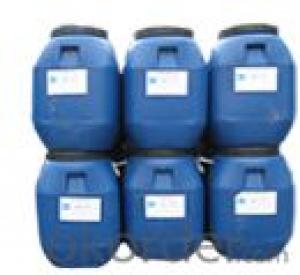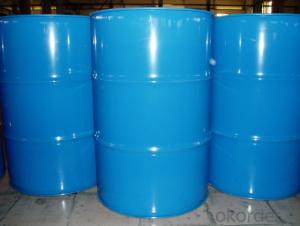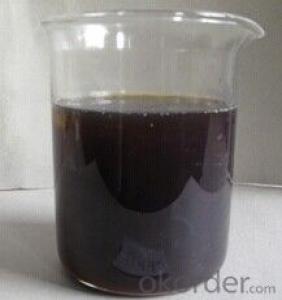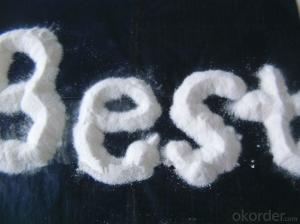Concrete Interface Treatment Agent ZY-2
- Loading Port:
- China Main Port
- Payment Terms:
- TT OR LC
- Min Order Qty:
- -
- Supply Capability:
- -
OKorder Service Pledge
OKorder Financial Service
You Might Also Like
Concrete Interface Treatment Agent(ZY-2)
Description
ZY-2 concrete interface treatment agent, a kind of cement mortar adhesion intensifier, is of a double component emulsion using the water-emulsion epoxy resin as its basic material, with outstanding adhesive ability with many basic materials such as smooth concrete, veneering bricks and slabs, metals, lumbers and plastics, as well as excellent water resistance, moisture and heat resistance, anti-freezing/thawing and aging performances. It can be used in the construction of moist base course without toxic pollution. In addition, the application processing technology results in simple construction and significantly saved consumption, so such agent has been used widely in building decoration, reconstruction of old buildings, and moisture proof and waterproof fields, etc.
Application
1. Plastering on smooth base course:
Instead of such procedures as the degreasing with soda washing and the manual roughing for the smooth concrete surface, the direct plastering followed by coating with ZY-2 can improve over 10 times the adhesive ability of the mortar and concrete base course. As a result, the mortar hollow problem existing in the building engineering is solved. Such product can also be used at any location such as wall surface, floor, ceiling, beams or columns.
ZY-2 can also be applied on the smooth base course surfaces such as metals, plastics and lumbers, (for example, steel structure, PVC board, xylolite slab and TK, etc.,) in order to make plastering course or thick fireproof and decoration coats on them.
2. Connection between new and old concretes:
ZY-2 can be used in connection between new and old concretes for concrete construction joint, reinforcement of beams and columns, and reconstruction of the old foundation. The shear strength of new and old concrete interfaces after treatment is increased by above 3 times.
3. Brick and board adhesion of such material as face bricks, glass mosaics and small marbles:
Coating ZY-2 on the back of bricks and slabs and using cement mortar for the leveling course is the most economic adhesion technology, which has a adhesion ability of about 4 times higher.
4. Processing of oil pollution base course:
ZY-2 has good immersion and emulsification functions. The plastering after its direct application is available for the base course with less greasy dirt, and ZY-2 should be used after cleaning up of the course with large number of greasy dirt.
5. Waterproof and moistureproof paints: refer to-Waterproof Method.
ZY-2 Adhesion Enhancement Performance
Table 1
Adhesive strength (MPa) | ||||
Concrete cement mortar | Normal temperature d30 | Unprocessed | Processed with MNC-302 | Processed by roughing |
0.044 - 0.070 | 1.3-1.5 | 0.4-0.5 | ||
After freezing and thawing (75 cycles under -15 degree C -normal temperature) | 0 | 0.5-0.6 | / | |
Artificial aging (equivalent to 20 years) | / | No change | / | |
Face brick - cement mortar | Normal temperature d30 | 0.08-0.13 | 0.5-0.6 | / |
Glass mosaic - cement mortar | Normal temperature d30 | 0.05-0.06 | 0.6-0.9 | 1. / |
Marble - cement mortar | Normal temperature d30 | / | 0.4-0.6 | / |
Mortar - immerse in machine oil | Wiping out with alkali water |
| 0.5-0.6 | / |
Cement after 7 days immerse in machine oil | Wiping out machine oil with cloth |
| 0.3-0.4 |
|
Concrete - cement mortar | Normal temperature d30 | Shear strength (MPa) | ||
0.66 | >2.25 | / | ||
New concrete-old concrete | Normal temperature d30 | / | >3.08 | 2.65 |
Note:
1) The adhesion area S=50m2 for the test sample of adhesive strength and S=110m2 for that of shear strength;
2) The data marked with * is the figure available after roughing and coating with YJ-302, with the concrete damaged partially and integrated interface.
Preparation method
1. Proportion ratio
Component | Component A | Component B | Quartz powder or cement |
Proportion | 1 | 3 | 0-5 |
Note:
1) Either the weight ratio or the volume ratio can be adopted;
2) The general plastering may not be extended with fillings, and the quartz powder or cement can be extended for connection between new and old concretes; extending the cement results in high strength but fast drying, and attentions should be paid to that the construction should be carried out under the wet condition obeyed.
2. Preparation method
The components A and B are mixed evenly respectively, and then poured them into a vessel at a proportion and mixed evenly. Finally, they are extended with certain fillings and mixed to be mushy for use. The processing agent mixture should not be too much in each preparation and should be prepared on the basis of consumption as required. The prepared processing agent has a valid service life, i.e., 2 hours in summer and about 3 hours in winter.
Construction
1. Plastering on base course:
The loose part of concrete base course will be weeded, and then bosomed or washed off surface floating dust. The moist concrete base course or existence of demoulding agent from the templet is permitted, but seeper or massive greasy dirt is forbidden.
The prepared processing agent is brushed on the base course surface evenly, (including various base courses such as new and old concretes, cement asbestos board, xylolite slab and plaster board) and then applied with cement mortar immediately when the agent is not dry. If the processing agent is fast to dry after applied in summer, it can be applied manually after the base course is wet with water.
2. Paving of face bricks:
The veneering bricks and boards such as the face brick are not required immersing in water, and only wiping off the floating dust on their surface.
The face brick to be stuck will be brushed with processing agent once on its back, and then applied with cement mortar immediately for paving. It is permitted to brush only 4/5 middle part of the face brick, with its edge not to be applied with the agent. During paving construction of the face bricks, in addition to the ZY-2 grout to be brushed, the wall surface with binding plaster should be stuck immediately so as to lie mosaics into in the plaster, which will be compacted and leveled; papers can be thrown about 2 minutes after mosaics are stuck, followed by joint correction, adjustment and joint cleaning.
Paving of the mosaics, in fact, is only an additional procedure to brush the processing agent on the basis of the traditional method.
3. Connection between new and old concretes:
Its basic procedures are same as those of the base course plastering. When the concrete cannot be poured under the wet condition immediately after ZY-2 is brushed due to template and reinforcement barriers, such method can be used instead of the roughing, namely before the template is set up, brushing ZY-2 (extended with cement) in advance, on which sands are spread so as to make the concrete surface rough.
4. Curing
The construction and curing temperature should be above 0 degree C, preferred to above 5 degree C. The curing system is same as that of the cement mortar or the concrete.
During construction in winter, the anti-freezing processing agent should be selected and be used under -5 degree C
5. Dosage and price:
Gel consumption: 200-250g/m2 (4-5m2/Kg)
6. Storage
The components A and B should not be mixed during storage, with the storage temperature not lower than 5 ¡æ. The shelf life is a half year to one year. The component A can still be used after mixed evenly if water is found separated out of it.
- Q: The use of lime mortar as the wall paint material, after a period of time, there have been protruding radial cracks, try to analyze the reasons
- The cause of quality problems: First, plastering before the wall did not clean up the dust and the walls are not fully moist, or plaster before the wall was watering, there are clear water on the wall
- Q: Inorganic active wall insulation materials and building insulation mortar What is the difference
- Fire performance, thermal conductivity of the construction process is not the same!
- Q: Commercial concrete and dry mortar need to provide the other side of the information to the construction side
- First of all to provide commercial concrete and mortar mix design alone, followed by each time you need to use mixed station to provide concrete factory certificate, the scene to do slump and the same conditions test block. In accordance with the requirements of the construction unit to provide 28-day-scale standard compressive strength of the standard report, the qualified is the completion of this batch of concrete concrete work.
- Q: Building materials after the test is how to deal with? So much of the steel and other materials, the detection mechanism is how to deal with these materials?
- Related professional senior title; Test engineers with test certificate; 3 8 years or more test work experience 1 Related professional senior titles.
- Q: Cement mortar label M. M7.. M. C. C25; cement grade C. C. C. C. etc., are used to which stage of the building, at the edge of the fool, Pile, beam and other general use of the number of cement, cement mortar are used where? More
- M is the red brick label, cement mortar is Mb
- Q: Basement wall wipe 20 thick PG waterproof mortar, what is "PG waterproof mortar"?
- Type: the market used in the construction industry in the species is still relatively rich, generally according to its production process in the addition of the chemical composition of the different waterproofing agent, the market can be divided into the following four categories: 1 , Chloride metal salt waterproofing agent;
- Q: What kind of waterproof material is used for waterproofing in basement?
- Basement waterproof recommendations AA-DA waterproofing system with patent brand for Kohl. The main application areas: basement, swimming pool, kitchen, bathroom, wall waterproof and so on. This waterproof system is 100% pure acrylic polymer formula, in line with GB-2008 "harmful substances limit" and GB / T-1998 "drinking water safety evaluation criteria" two national standards, direct contact with drinking water. Products are green, non-toxic, tasteless, water resistance, abrasion resistance, tight and durable, with amazing adhesive force, and glass will not be stripped after bonding, drinking water works, wall works and home improvement project preferred products The
- Q: [Single choice] the following materials, do not belong to the commonly used building mortar cementing material is (). [Two construction division "construction] A. Lime B. cement C. fly ash D. gypsum
- Answer: This is a building materials on the technical and performance of the title, the main assessment of commonly used building mortar using the knowledge of cementing materials
- Q: According to the different parts of the building, how to choose mortar mortar?
- Plaster mortar is often divided into two or three layers for construction: the role of the bottom mortar is to mortar and the base can be firmly bonded, should have a good water retention
- Q: The external walls of the mortar in the insulation mortar need to do what anti-test materials? Can I provide detailed check-in format, please send to my mailbox @
- Hidden inspection batch you have to do the child powder Jujiao mad fox three types: one is the primary treatment, the second is the insulation layer, the third is crack layer. We generally do so. If you have specific problems in the link.
Send your message to us
Concrete Interface Treatment Agent ZY-2
- Loading Port:
- China Main Port
- Payment Terms:
- TT OR LC
- Min Order Qty:
- -
- Supply Capability:
- -
OKorder Service Pledge
OKorder Financial Service
Similar products
Hot products
Hot Searches
